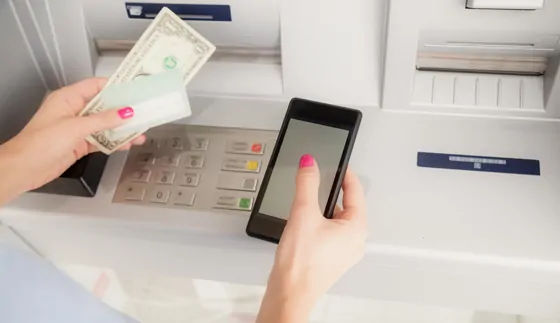Your Genesys Blog Subscription has been confirmed!
Please add genesys@email.genesys.com to your safe sender list to ensure you receive the weekly blog notifications.
Subscribe to our free newsletter and get blog updates in your inbox
Don't Show This Again.

Do you remember the days of savings passbooks, deposit slips, and filling out loan applications with a pen? It wasn’t that long ago when banking customer service was handled primarily at the branch level. While some of us still prefer working face-to-face with a teller or a loan officer, the reality is that bank transactions are increasingly happening on digital channels. But today’s customer loyalty is driven both in person and through online experiences.
Your customers appreciate convenience. They want to access account information and manage funds online. However, the level of convenience quickly diminishes with siloed communication channels and a lack of coordination between the contact center and back offices. It can be frustrating having no simple way to escalate an issue from a digital channel to a live service representative. This irritation is compounded by having to start over and repeat the issue because a service representative has no information about the journey leading up to the call.
Bankers are well-aware that customer loyalty is no longer guaranteed. Today’s customers are willing to shift to another bank if they are dissatisfied with the service they receive. Customers compare their level of inconvenience in staying versus switching banks. When the hassles outweigh the convenience of staying, they are likely to move on.
Customers typically think about their banking needs on two fundamental levels. First, they require day-to-day money management solutions such as checking accounts, debit cards, and money transferring capabilities. Then, there are the longer-term needs that support life goals, such as mortgages and investments. As more banks have added self-service options for managing everyday banking needs and consumers have become adept at using these tools, it has become even more important for banks to improve how they work with customers to achieve their longer-term financial goals.
According to Nicole Sturgill, Principal Executive Advisor with CEB, a best practice insight and technology provider, 62% of customers who say their bank is effective at helping them with certain pivotal steps toward life goals are loyal. In contrast, only 41% are loyal when their bank isn’t as effective at supporting long-term goals. Bank customers want more than just a debit card and online account access. They want solutions and guidance that help them budget and stay on track with their financial goals.
Identifying the service areas that build loyalty is a key step toward increased revenue and customer satisfaction. Yet it’s equally important to know how to implement these services. With customers frequently using multiple channels for service, sometimes simultaneously, an omnichannel approach to service sets your team up for success. With an omnichannel view of the customer experience, interactions aren’t stand-alone events. Rather, they are linked together to form a complete customer journey. By looking at each customer’s end-to-end journey across every channel, your team can deliver more engaging, empathetic service, while reducing customer frustration. This drives loyalty.
With an omnnichannel approach, journeys can be designed and optimized from the customer’s point of view. This approach ensures that every interaction is aligned for the customer’s success and that everyone working with the customer is fully informed and equipped to provide personalized service. In other words, customers don’t have to repeat themselves, start over, or waste time providing answers the bank already has. This creates effortless journeys that exceed customer expectations and foster long-term loyalty.
Learn more about how to build loyalty through effortless customer journeys. View the on-demand webinar with CEB TowerGroup where Nicole Sturgill and I share insights from our extensive research and experience working with banks who are fostering customer loyalty.
Subscribe to our free newsletter and get blog updates in your inbox.